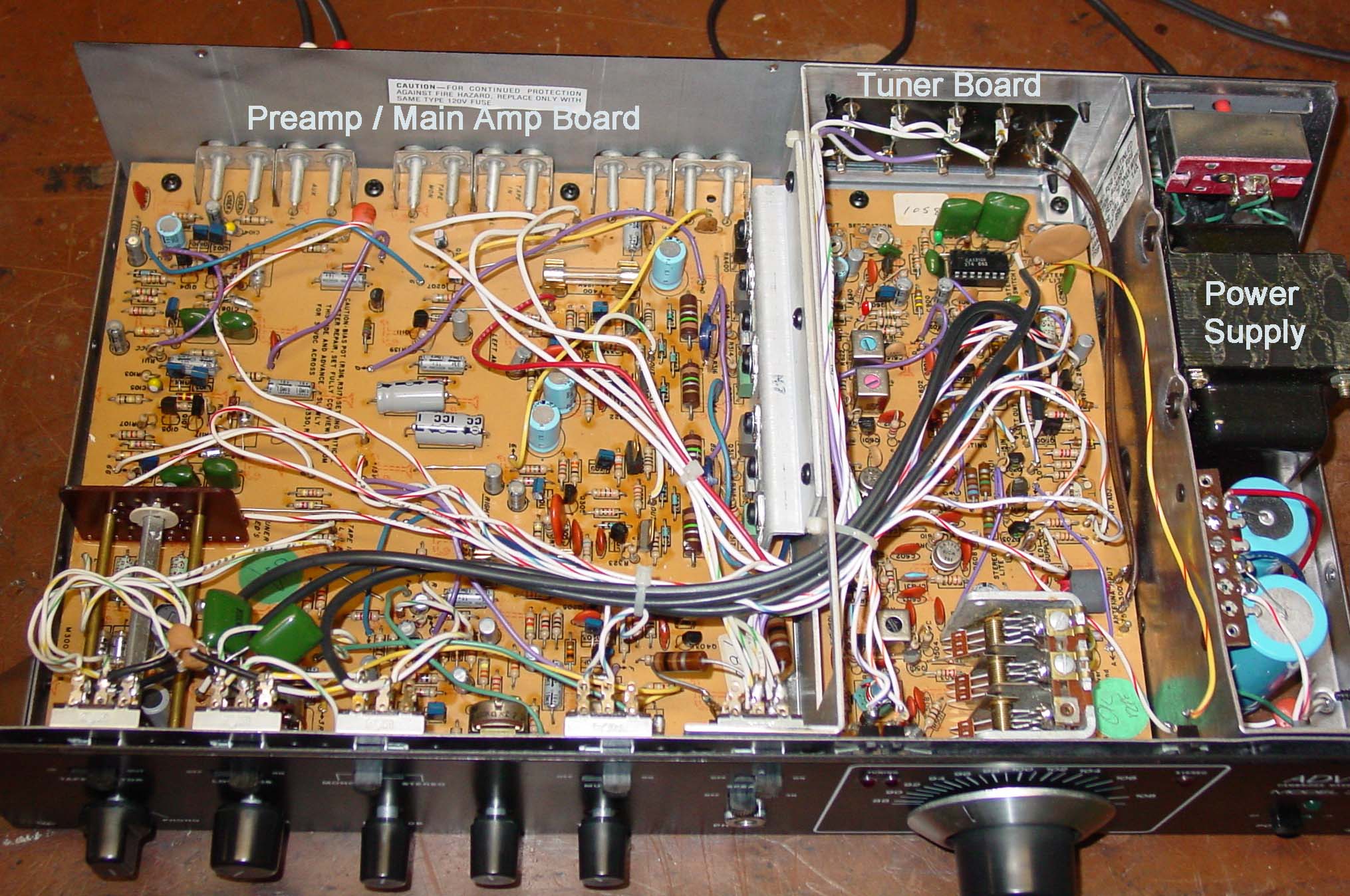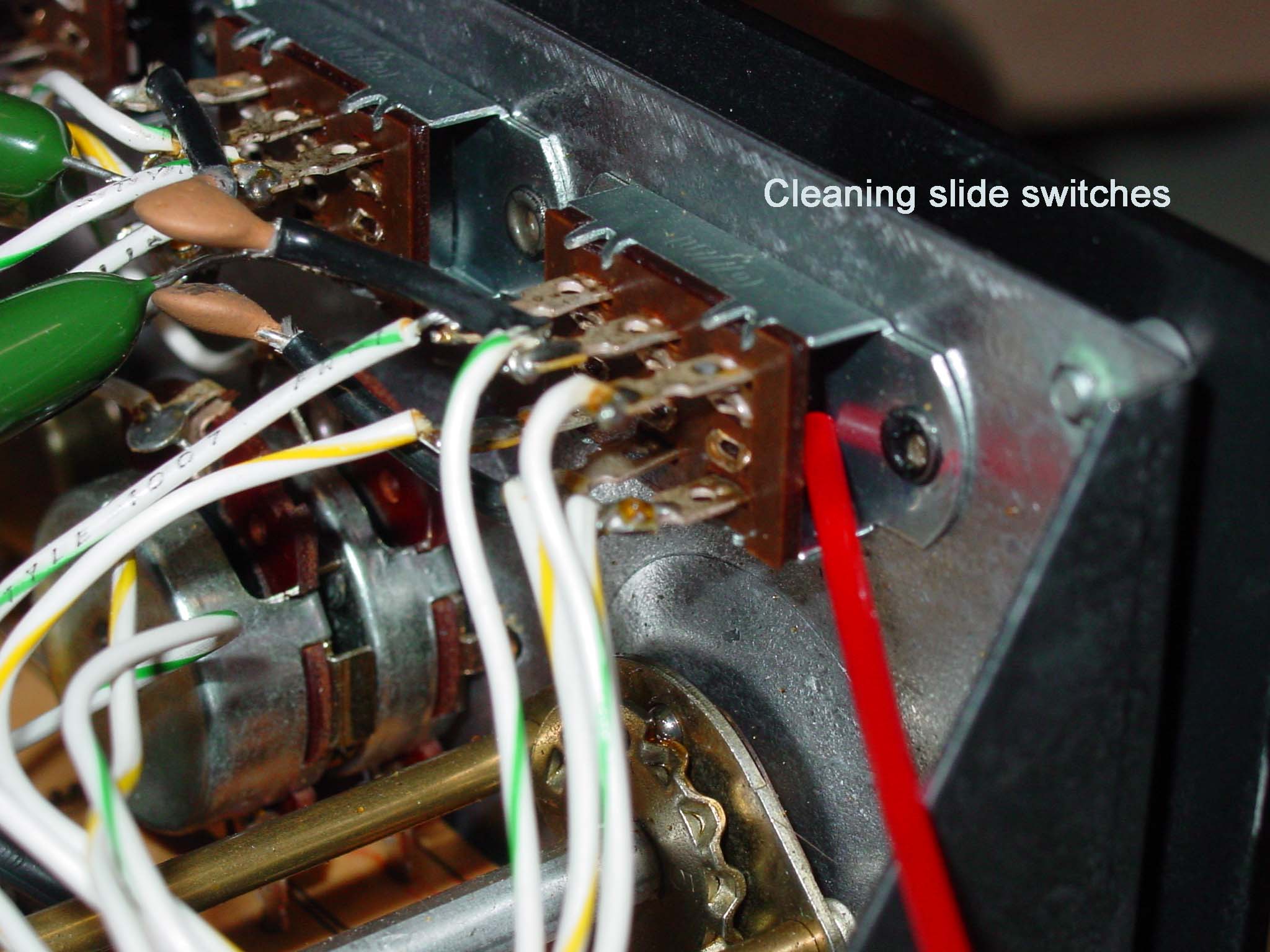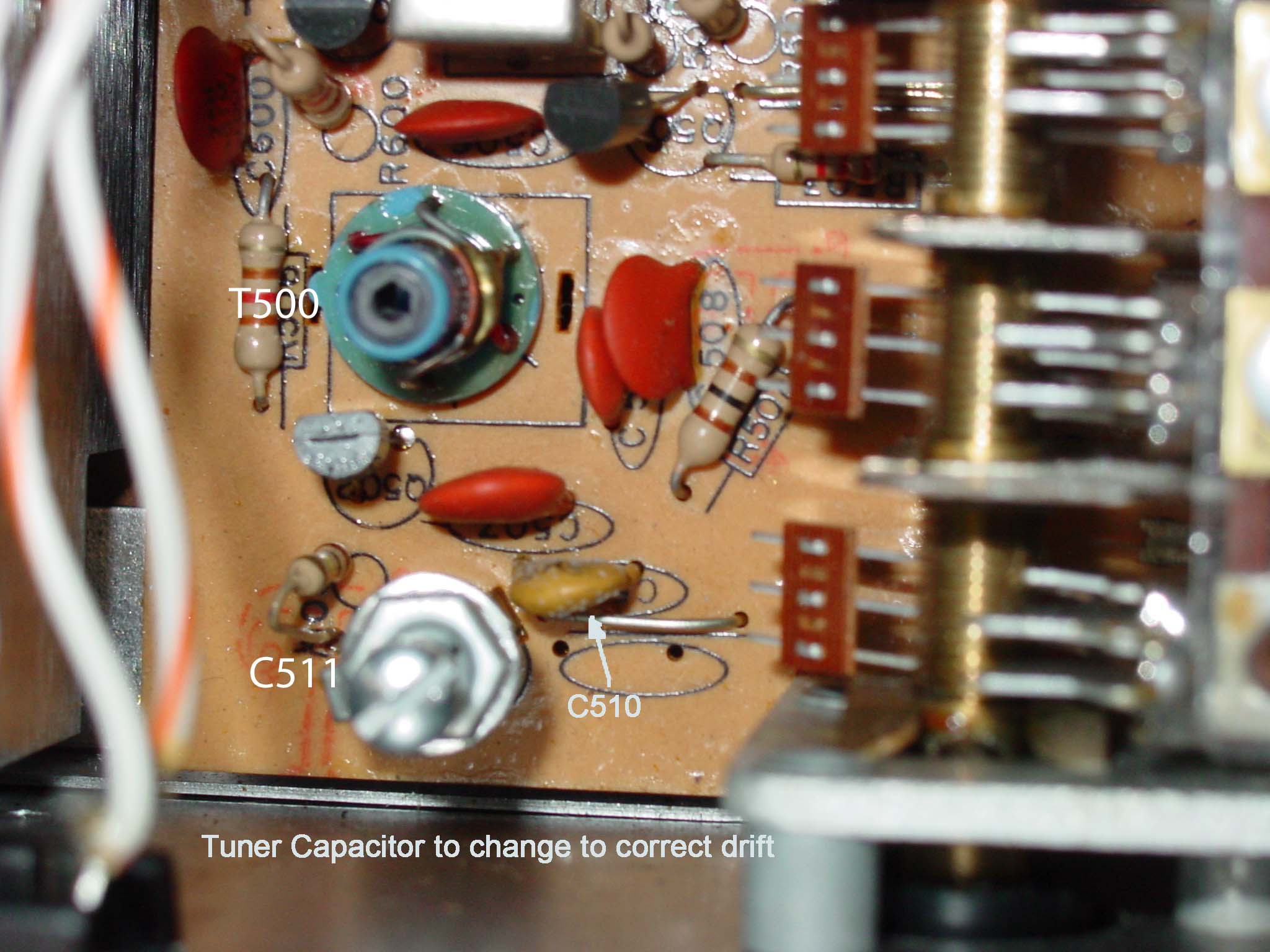My model 300 Receiver repair experiences.
I’ve had dozens of Advent 300s cross my bench, and seen many types of failures. Let’s face it, the model 300 was innovative, but made to be easily affordable. This is ‘marketing talk’ for inexpensive parts. The volume, balance and tone controls, and slide switches are particular culprits. Here’s a few suggestions, based on common sense and many years of repair experience:
- Clean the Switches and controls! Clean the main rotary function selector switch, and all slide switches. Clean the volume, balance and tone pots. Use a good quality contact cleaner. I have used products from Caig Labs for years, and their products are the best. Keep in mind that these inexpensive parts are 30 years old!
- Look for leaky electrolytic capacitors, and replace them. This is, by far, the most common failure in the Advent 300. These caps don’t last forever and Advent bought the lowest rated capacitors that would work. I always replace all the electrolytic caps, power supply, coupling etc. The parts will cost you ~ $60.00, and several hours of work. This is well worth the time. Capacitor kits are available on my Parts Page.
- Reduced or no output – one channel – most likely due to old, dried out electrolytic capacitor. Feed in a 1 kHz signal, get a scope and see where the signal disappears. These coupling caps can be in the tuner, preamp or main amp. See the tuner schematic or the amplifier schematic.
- Most of the other passive components, resistors, non-electrolytic caps etc, are probably OK. However, I did have one unit where a mylar cap in the bass tone control circuit was bad, and gave excessive bass boost. That was a tough one!
- No output – one channel – If there’s no output with any input (phono, tuner etc.) there may be a blown output stage. I’ve seen a few of these, always in the left channel (curiously). Rather than mess around with troubleshooting individual transistors, I just replace all transistors and diodes in the output stage. See my substitution list. Mouser and Digikey electronics can help with all these transistors. The substitution list has detailed info. A transistor checker is useful, but not required. Transistor kits are available on my Parts Page. I’ve occasionally seen a dead channel due to failure of a passive component like a resistor.
- No stereo signal and/or muting circuit non-functioning – I’ve seen this in a few units, and traced it each time to Q802, a 2N5245 FET in the muting circuit. These transistors are available from MCM.
Updates: About a dozen changes and updates were issued by Advent over the years. The most important ones are presented here.
Output transistor insulators – if yours are a pink or light green silicon plastic, replace these with mica insulators and heat sink grease. This improves heat transfer and transistor cooling. You only need a little.
If you have hum in the phono preamp, add a grounding strap as shown to prevent ground loops.
Excessive tuner warm up drift: This is a tricky problem. My definition of excessive drift: with the receiver cold, you tune in a station. Upon warm up, the station tuning lights have changed from equal brightness to one completely off. If one light has dimmed but is not off, this is not excessive drift. To fix excessive drift, you can replace C510. This is a 20 pf ceramic unit, and the temperature coefficient is critical. The capacitance must change with temperature to compensate for drift in the tuning coils as they heat up. Typical temp coefficient codes are N330, N470 and N750. For example, N330 = 330 ppm drift per ° C. If you have a 20 pf N750 installed, replace it with 20 pf N470. I’ve found that excessive drift is improved by swapping the N750 cap with an N470 cap. These caps may be hard to find. Tuner drift is difficult to fix, but swapping these caps will get you close. All drift problems I’ve seen involve the N750 cap. If your model 300 doesn’t use the N750 cap,switching to the N470 cap won’t help.
Does your model 300 have this transistor in the preamp or power amp stage?
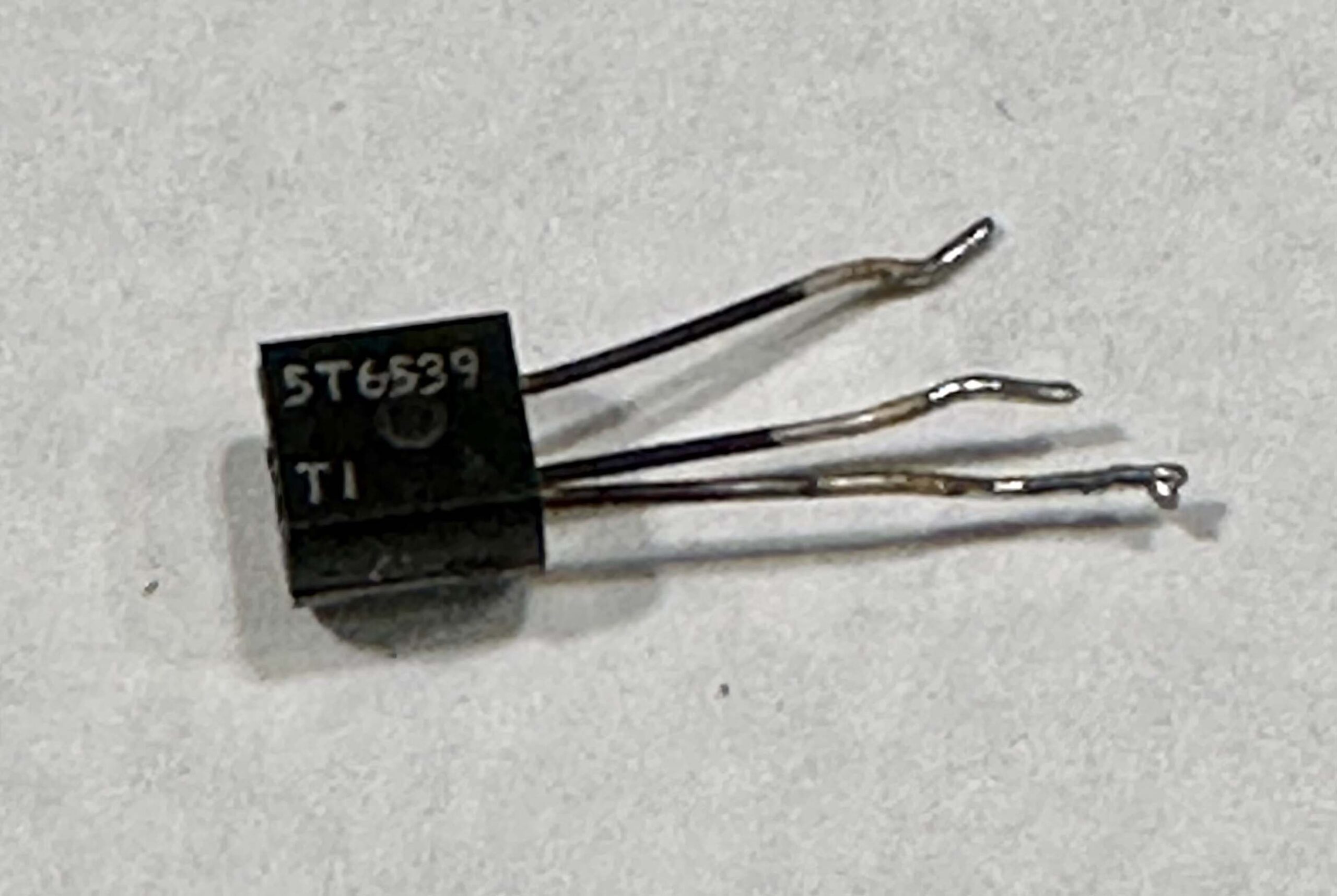
If so, your receiver was manufactured during a shortage of the 2SC1345 transistor, which was specified in the original design. The pinout does not match the 2SC1345, so the transistors were installed ‘rotated’ in the circuit board holes.
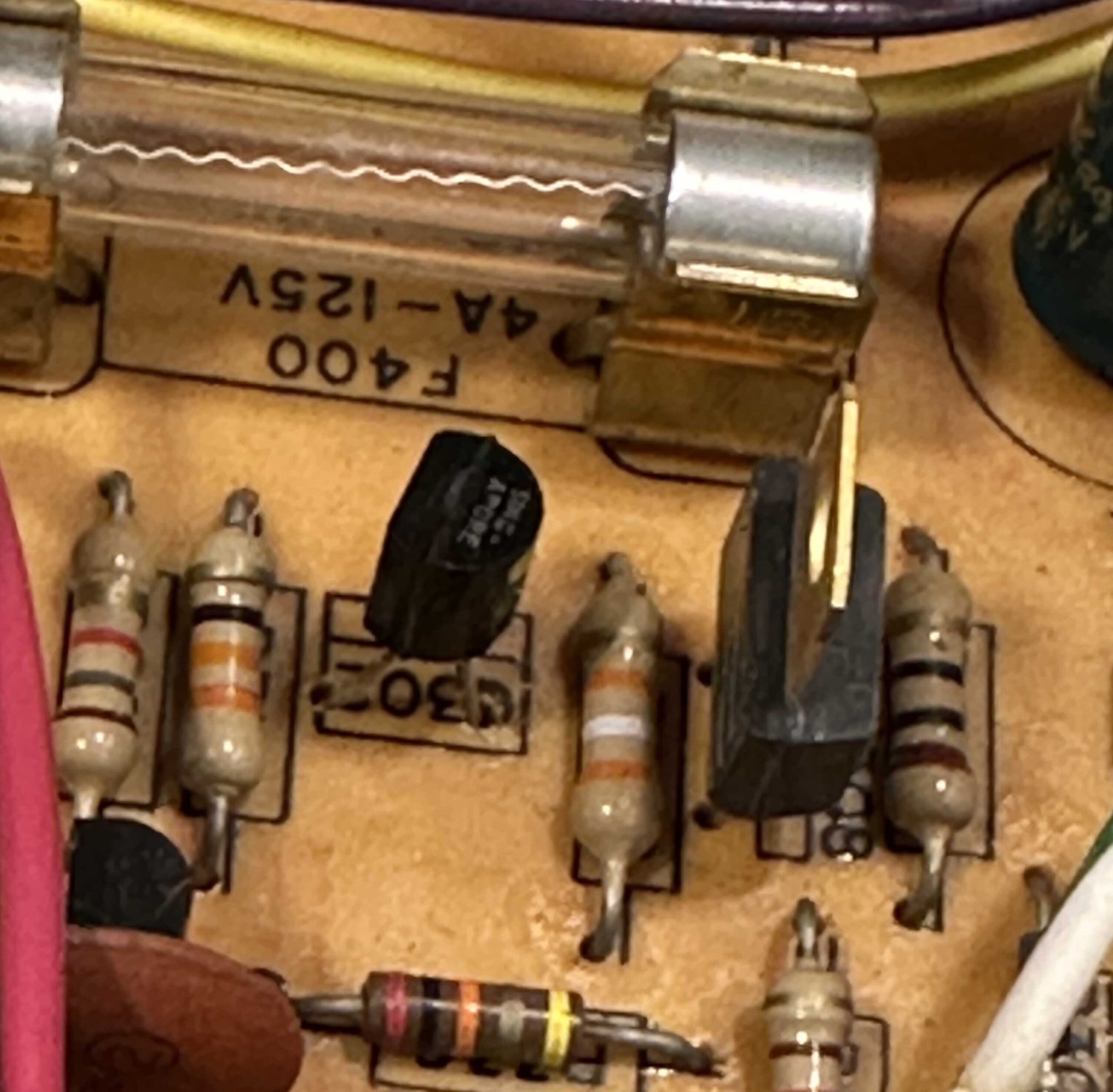
Looking for specs, I have searched for 5T6539 and TI 5T6539 and found nothing. Whenever I see these transistors, I pull them and replace with the a genuine 2SC1345. I have put these 5T6539 on my transistor tester, and they are NPN type with gain similar to the 2SC1345, but with a higher noise factor. Long story short, these transistors work, but are probably not the best.
